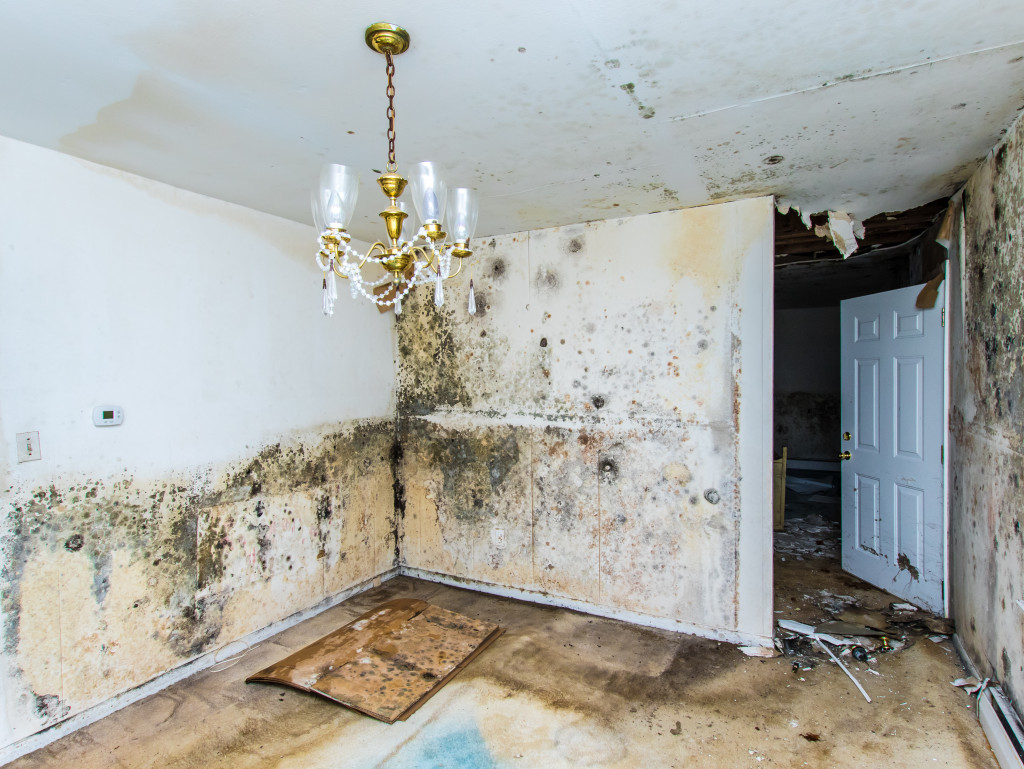Owning a house is a never-ending responsibility. Once construction is over and you’re finally settled in, the long list of things to look out for immediately begins. The list includes leaks in pipes, the condition of the heating system, and the moisture in the house including molds and mildew.
What are molds?
Molds and mildew are both moisture issues. They usually form during hot and humid summers. In some situations, they also grow during the cold and damp months of winter.
Molds are a form of fungus. The white or green stuff that you find in books that you kept unmoved for a long time, that is mold. They also grow on toys, clothes, walls, and pretty much any surface. They have a velvety and rough appearance. The texture actually depends on what kind of mold it is.
How does this happen? Mold produces spores, and these spores just float in the air, whether you like it or not. When they land on a surface, especially a damp one, they grow immediately. If you are lucky enough to spot a mold growth early on, you can save whatever item it latched on. If not, they are capable of “eating” the object. You would notice that they also leave the object musty and with a weird smell.
There are over 300,000 types of molds. A lot of them like being uninvited guests ready to stay under leaky sinks, powdery food, and drywall.
Do molds pose health hazards?
Aside from ruining your favorite books and leaving them fit for the trash bin, molds also affect your family’s health. If you have family members who are sensitive to allergens and irritants, you must take action as soon as you can.
The allergens and irritants that molds produce can cause allergic reactions. The common effects are sneezing, skin rashes, red eyes, and runny nose. If you have asthma, molds spell disaster as they can trigger your ailment.
Even for non-allergic people, molds can cause irritation of the skin, lungs, throat, and eyes. According to the U.S. Environmental Protection Agency, the study on the effect of mold on people’s health is ongoing. If you suspect molds are affecting your family members’ health, consult a physician immediately.

How do you prevent the growth of molds at home?
Fortunately, there are ways you can keep the growth of these unwanted guests at bay. Some remedies are easy and you can do them by yourself, while others require professional intervention.
The cure
There are chemical cleaners you can buy from any supermarket. However, if you don’t want to use too many chemicals, your best home weapon is vinegar. If you spot a cabinet corner with mold growth, get some white vinegar and wipe it down. You can do the same with other surfaces.
You can also use baking soda, bleach, hydrogen peroxide, and tea tree oil. If it’s already too late, you might need to toss out items heavily affected by molds.
The prevention
To prevent their growth in the first place, you should keep the moisture level inside your home balanced. The bathroom is the most susceptible to mold growth because of the constant moisture. Open your bathroom window when taking a shower so the moisture doesn’t stay trapped inside. If you don’t have a bathroom window, consider having air vents installed.
Check your carpets regularly. Molds also love growing in areas like these. If you smell an unpleasant and musty odor coming from the floor, there might be a mold city right under your feet. Clean them regularly and schedule professional deep cleaning every once in a while to be sure.
To avoid mold growth, you might need to say goodbye to some of your wardrobe tenants. If your closet, or any cabinet or storage, is stuffed, less air circulates. Air circulation is important to make sure that no mold grows in these closed spaces.
Do these closet checks every season, not just in spring. Winter brings dampness and coldness while summer brings humidity which molds love.
Use dehumidifiers. You can buy bundles of dehumidifiers at any hardware store. Place one in a cabinet and observe how much water it collects in just a few hours. You will be surprised that sometimes, in less than 24 hours, you need to switch out to a new one.
Don’t worry because with the constant use of dehumidifiers, you will need less of them soon.
The key to mold growth prevention is good ventilation. Keep an eye out especially if you have a basement. You will need to invest in a good air conditioning system for all rooms in the house to make sure you prevent molds from growing.

